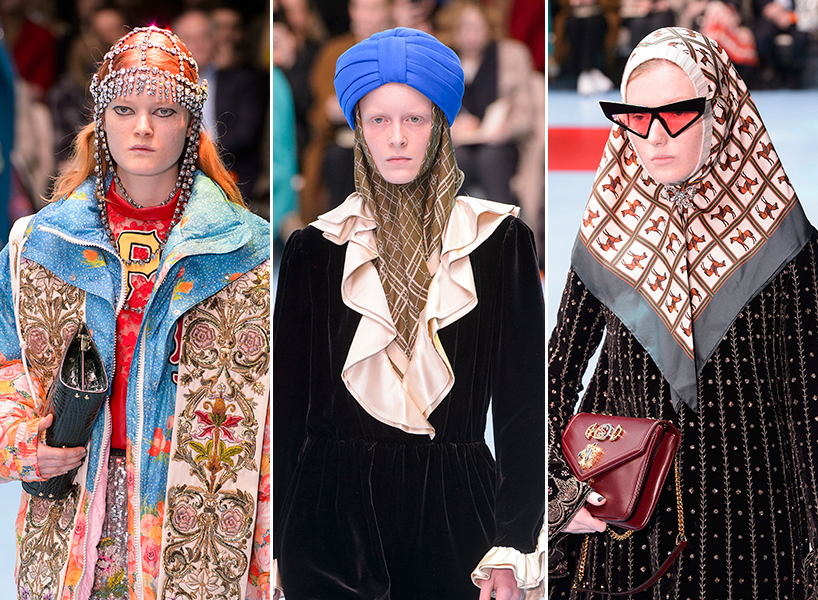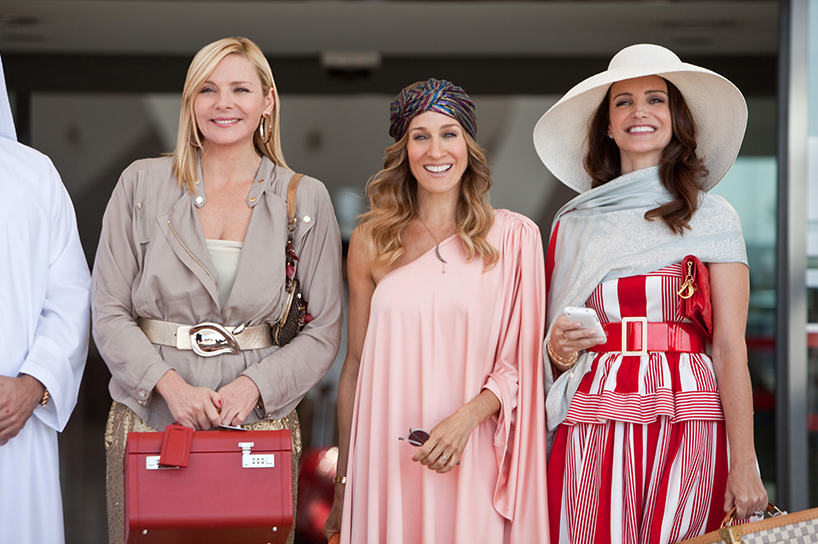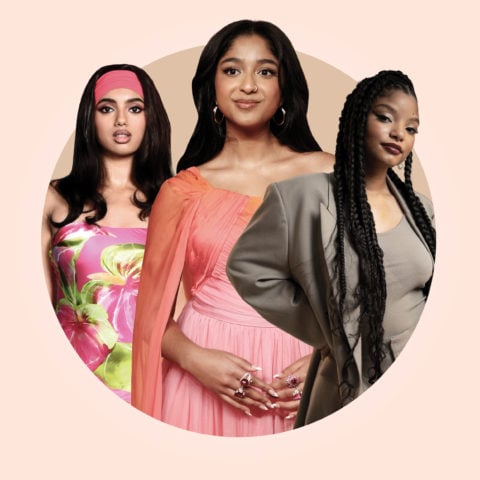Fashion Has Been Obsessed With Turbans for Centuries… and It’s Still Not OK
Turban-inspired headpieces have cycled in and out of style since the Renaissance—and the fact that it's still happening in 2018 says a lot about the slow pace of progress in the fashion world


Last month at Gucci’s fall 2018 presentation in Milan, designer Alessandro Michele sent replicas of Sikh turbans down the runway in a show that included accessories as varied as babushka hoods, pagoda hats and headscarfs that resemble hijabs and niqabs. The overall message? Identity is fluid and something that can be put on as easily as a hat. We are “in a post-human era,” the designer told Vogue’s Sarah Mower. “Now, we have to decide what we want to be.”
Within hours of Michele’s presentation, accusations of cultural appropriation were being lobbed across the internet. London-based photographer and editor Faiyaz Kolia was the first to succinctly spell out exactly what was so gross about it, telling Indie magazine’s Alice Finney, “Gucci got to pick and choose from cultural imagery all the things that are aligned to their ‘fantasy’ narrative without any consequences, and then so easily put it on white skin. What message does that send? That it’s OK to wear a hijab if you’re young, beautiful, rich and white but not if you’re actually a Muslim or a person of colour? It’s 2018, all you need is a little empathy and the internet to know where the line needs to be drawn.”
This isn’t the first time turbans have been “in”
The two words from Faiyaz’s statement that seem most poignant are “It’s 2018”—because Michele’s fascination with the turban isn’t necessarily something new. While some Muslims, Jews, Rastafarians and Christians wear turbans, and many cultures wear turban-like headpieces that aren’t necessarily tied to faith, the Sikh turban—which has been a fundamental part of the religion since its founding in the early 1500s—is likely the source material for what some have dubbed the “fashion turban.” A more minimalist take on the religious headpiece, Western style-setters have worn a version of this headgear, on and off, for literal centuries.
One early example is Vermeer’s 1665 painting, Girl with a Pearl Earring, which features a young woman wearing an “exotic and expensive” turban from Turkey; according to the Fine Arts Museums of San Francisco, artists of this period often imported clothing and accessories, like turbans, from far-off places—to add a little exotic flavour to their art. In her 2006 book, Women’s Hats, Headdresses and Hairstyles, author Georgine de Courtais traces its popularity among fashionable Englishwomen, saying, “For ‘full dress’… some kind of headdress or cap was considered almost essential, and allowing for occasional disappearances from the fashionable scene, the turban in some shape or form was by far the most popular form of headwear [between 1790 and 1810].” And though some women’s magazines called them matronly in the 1820s, The Ladies Magazine would inform its readers that turbans, “continue in undiminished favour” as late as 1835.
Modern turbans became a way to signal exotic glamour
The early 20th century saw a huge resurgeance in popularity of the fashion turban, this time worn mostly by white women to signify their worldliness. Of course, this was a very general nod to exoticism, since in most cases the draped styles and headscarves were scrubbed of their origins and renamed as “Eastern-influenced headpieces.” In Europe, French fashion designer Paul Poiret was hugely influenced by Orientalism—according to a Vogue article about the label’s revival for fall 2018, “Poiret’s aesthetic was… aligned with the languor of a fictional harem”—and he revived the turban in the early 1900s. In the ’20s, it was a flapper mainstay. Then, in the ’30s and ’40s, it became associated with Hollywood glamour. Think, Greta Garbo in The Painted Veil (1934) and Lana Turner in The Postman Always Rings Twice (1946). Years later, model Marisa Berenson defined the relaxed glamour of the ’70s with her kohl-rimmed eyes, tanned skin and bright, towel-wrap headpieces.
 Sex and the City 2
Sex and the City 2Of course, the ’20s, ’30s and even ’70s were, culturally and politically, a very different time. But while it’s easy to look back at those examples and think, They didn’t know any better, designers are getting away with similar nonsense in this century, too. The fashion turban’s contemporary resurgence kicked off in 2010, the year that Sarah Jessica Parker gallivanted around Abu Dhabi in one for Sex in the City 2 and The New York Times’s Simone S. Oliver declared, “The Turban Makes A Fashion Comeback, Again.” In the trend piece that, read eight years later feels incredibly out of touch, Oliver praised Miuccia Prada, Jason Wu, Vena Cava and Giorgio Armani for their appropriation, saying their use of the turban created “a new association for young women.” That is, it became a fashion accessory that was visually compelling, but free of its political and religious roots, which had become increasingly feared after 9/11.
Is fashion *finally* getting it?
When Michele sent Sikh-style turbans down the Gucci runway on white models this past season, the reaction was different. The question was no longer, “Is this cultural appropriation?” It had become, “Why is cultural appropriation still happening?” That’s a huge shift from even just eight years ago, but let’s not forget: Gucci still planned a major fashion event that featured the appropriation of several cultures… so things clearly haven’t changed enough.
That’s because the fashion world is only now starting to grapple with the concept of cultural appropriation. For years, designers and creatives have argued that the freedom to be influenced by any and all cultures is a necessary part in creating the new and the now that we have become accustomed to—especially in the fast-paced fashion industry. In the same Vogue.com article, Michele told Mower that he wanted to, “represent the lab I have in my head. It’s physical work, like a surgeon’s.” In his view, he didn’t create a collection; he created a mood board, slicing and pasting cultural imagery together as he saw fit, each element cut off from its original point of origin and religious or cultural significance.
But it’s exactly this kind of compartmentalization that people are finally taking issue with. And as social media continues to facilitate more open dialogue about the nuances of what makes appropriation so problematic, designers are no longer spared from criticism. In the wake of the Gucci presentation, many have offered very simple solutions for designers, including hiring diverse models who can actually speak to these cultural references (the internet loved Adwoa Aboah in an African-inspired wrapped headpiece on Edward Enniful’s re-launched British Vogue), or working more closely with communities of origin to create cross-cultural innovations and to open up new dialogues.
Yo.. @gucci … I mess with you guys… but this isn’t a good look for you… could you not find a brown model? pic.twitter.com/INqxwrfB0t
— Avan Jogia (@AvanJogia) February 22, 2018
These are good places to start, because fashion, above all else, is a dialogue about the ways in which we represent our personalities and experiences visually. But if it’s going to be a successful dialogue, it has to start from a place of mutual respect—and fashion’s elite needs to remember to give credit where it’s due.








